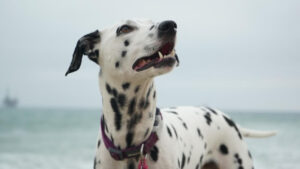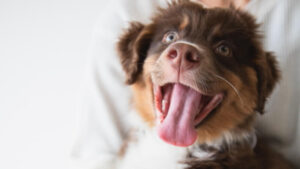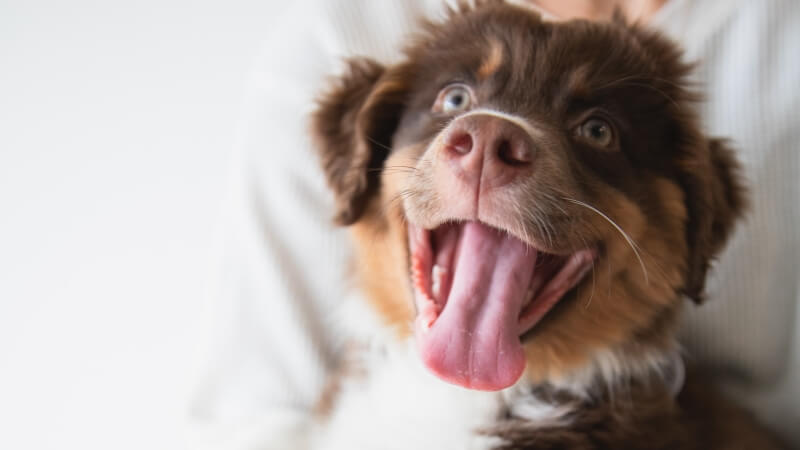
Dog Puzzle Feeder vs Interactive Toys: Which Is Best For Your Pooch?
Choosing the right plaything for your furry friend – be it a dog puzzle feeder or interactive toys – is essential for their mental and

Puzzle feeders for dogs have revolutionized the way pet owners think about their furry friends’ mental and physical stimulation.
These ingenious devices not only provide an engaging activity for dogs but also offer an opportunity for owners to add a personal, decorative touch.
This comprehensive guide delves into transforming a standard puzzle feeder into an enticing and aesthetically pleasing challenge, turning mealtime into a delightful and enriching experience for your dog
Embarking on the journey to find the right puzzle feeder for your dog is an exciting endeavor.
The ideal feeder should be tailored to your dog’s specific needs, considering factors like size, breed, and cognitive abilities. It’s crucial to select a feeder that presents a stimulating challenge but isn’t overly complex.
A puzzle feeder that’s either too simplistic or too intricate can result in disinterest or even stress for your dog.
The goal is to find a balance that keeps your dog engaged, intrigued, and eager to solve the puzzle, turning feeding time into a fun and enriching experience.
Once you’ve selected the puzzle feeder, the next step is to gather your decorating supplies. This is a creative process where you can personalize the feeder to suit your dog’s taste and your aesthetic preferences. Opt for bright, non-toxic paints that are safe for pets and can add a splash of color to the feeder.
Durable papers and strong adhesives are also essential, as they need to withstand the rigors of your dog’s play.
Each material should be selected not only for its aesthetic appeal but also with your dog’s safety and the longevity of the feeder in mind. The goal is to create a feeder that is both visually appealing and sturdy enough to endure energetic play sessions.
Creating a design plan for your puzzle feeder should take into account your dog’s visual capabilities and preferences.
Unlike humans, dogs perceive colors differently, with blue and yellow being the most distinguishable to their eyes.
Incorporate these colors into your design, using various textures and patterns to create a visually stimulating and engaging puzzle feeder.
This step is all about understanding how your dog sees the world and using that knowledge to design a feeder that is not only functional but also visually appealing to your canine friend.
Now comes the fun part – decorating the puzzle feeder. This phase allows your creativity to shine.
Use your chosen paints, papers, and adhesives to embellish the feeder, making sure to secure everything firmly. It’s essential that all decorations are safely affixed and pose no risk to your dog.
This stage is not just about making the feeder look good; it’s about creating a piece that reflects your dog’s unique personality and your personal style, making the puzzle feeder a bespoke item for your beloved pet.
To enhance the appeal and functionality of the puzzle feeder, consider adding elements that vary in difficulty.
This could include creating intricate treat paths, movable sections, or hidden compartments within the feeder. These features are designed to mentally engage your dog, challenging them to think and explore different ways to access their food.
The objective is to transform the feeder from a simple toy into a captivating puzzle that stimulates your dog’s mind and keeps them entertained.
Throughout the entire process, safety must always be the forefront concern.
Avoid using small, detachable parts that could pose a choking hazard, and ensure there are no sharp edges that could harm your dog.
Regularly inspect the feeder for any potential hazards to ensure that it remains a safe and enjoyable toy for your pet. A safe puzzle feeder is essential for worry-free play and peace of mind.
When it’s time to introduce the decorated puzzle feeder to your dog, choose a calm environment.
Start with simpler challenges to allow your dog to get accustomed to the new toy. Gradually increase the complexity of the tasks as your dog becomes more comfortable and skilled at solving the puzzle.
This stepwise approach helps your dog to develop confidence and prevents them from feeling overwhelmed by the new challenges.
Lastly, maintaining the cleanliness and integrity of the puzzle feeder is crucial for your dog’s health and safety. Regular cleaning is necessary to prevent the build-up of bacteria and food residue.
Additionally, frequent inspections for wear and tear are vital to ensure the feeder remains safe and enjoyable for your dog. Proper upkeep not only extends the life of the puzzle feeder but also ensures it remains a safe and engaging toy for your dog.
Dogs need mental exercise to stay sharp and content. A puzzle feeder provides cognitive challenges, promoting problem-solving skills and potentially slowing signs of aging. This mental engagement is crucial for a dog’s long-term health and happiness.
For those looking to take their decorating skills further, consider advanced techniques like decoupage, 3D printing elements, or even integrating electronic components for an interactive experience. These methods can add a unique flair to your puzzle feeder.
A beautifully decorated puzzle feeder for dogs does more than just serve as a mealtime accessory; it’s a vital tool for mental enrichment, sensory engagement, and behavioral management.
Personalizing a puzzle feeder provides your dog with a stimulating and enjoyable experience that supports their overall well-being.
If you haven’t yet introduced a puzzle feeder to your furry friend, now is the perfect time to start. It’s a rewarding way to enhance your dog’s life, ensuring they are mentally stimulated, physically active, and deeply bonded with you.
Can I use regular household paints for decorating the puzzle feeder?
While household paints might seem convenient, it’s important to use only non-toxic, pet-safe paints. Dogs may chew or lick the feeder, and regular paints can contain harmful chemicals. Always check the label for pet safety assurances.
How often should I introduce a new puzzle feeder to my dog?
The frequency of introducing a new puzzle feeder depends on your dog’s interest and engagement levels. If you notice your dog losing interest in the current feeder, it might be time to introduce a new one. Typically, rotating feeders every few weeks can keep the challenge fresh and exciting.
Are there any specific textures or materials I should avoid in a puzzle feeder?
Avoid materials that can easily break, splinter, or be ingested, such as brittle plastics or small metal parts. Also, steer clear of fabrics that might unravel and pose a choking hazard. Stick to sturdy, chew-resistant materials that are safe for dogs.
How can I test if the puzzle feeder’s difficulty is appropriate for my dog?
Start with simpler challenges and observe your dog’s ability to solve them. If they solve it too quickly and without much effort, increases the complexity. Conversely, if your dog seems frustrated or unable to solve the puzzle, simplify it. The goal is to find a balance that keeps your dog engaged without causing stress.
Are puzzle feeders suitable for all breeds and ages of dogs?
Puzzle feeders are generally suitable for dogs of all breeds and ages, but it’s important to choose the right size and complexity level. For puppies or senior dogs, choose feeders with simpler mechanisms. Larger breeds might need sturdier and bigger feeders, while smaller breeds benefit from feeders that are appropriately sized for their smaller mouths and paws.


Choosing the right plaything for your furry friend – be it a dog puzzle feeder or interactive toys – is essential for their mental and

Wondering if a puzzle feeder could revolutionize your pet’s mealtime into an exciting challenge? This unique device promises to engage your furry friend both mentally

For passionate pet enthusiasts, a puzzle feeder is more than just a toy; it’s a critical tool for mental stimulation and dietary control for their

Are you ready to dive deeper into the world of puzzle feeder and embark on a journey to ensure your furry friends remain mentally stimulated?

Choosing the right plaything for your furry friend – be it a dog puzzle feeder or interactive toys – is essential for their mental and

Wondering if a puzzle feeder could revolutionize your pet’s mealtime into an exciting challenge? This unique device promises to engage your furry friend both mentally

For passionate pet enthusiasts, a puzzle feeder is more than just a toy; it’s a critical tool for mental stimulation and dietary control for their

Are you ready to dive deeper into the world of puzzle feeder and embark on a journey to ensure your furry friends remain mentally stimulated?
Copyright © 2024 puppypuzzlefeeder. All Rights Reserved.